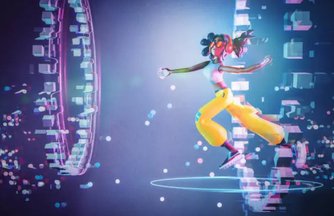Kruelmi: A Fresh Perspective on Digital Subcultures
word top article dives deep into the phenomenon of kruelmi, examining its roots, rise, and cultural implications. This review explores the main takeaways of that insightful piece, highlighting how kruelmi offers a nuanced commentary on the intersection of internet aesthetics, psychological expression, and communal belonging.
Understanding Kruelmi: The Core Idea
At the heart of the article is an attempt to define kruelmi—not merely as a word, but as a digital ethos. The term itself is portrayed as an abstract concept, blending emotional duality (“cruel” and “melancholy”) with an aesthetic twist that is both raw and stylized. Kruelmi is less about rigid classification and more about a feeling—often dark, surreal, and oddly comforting for those who resonate with it.
The article underscores how kruelmi thrives on contradiction. It’s where vulnerability meets edge, where sadness is celebrated rather than hidden, and where individual pain is transformed into collective creativity. Whether through moody visuals, glitchcore art, or emotionally charged short-form writing, kruelmi is a digital moodboard of inner turmoil turned into an identity.
Visual and Emotional Aesthetics
A significant portion of the article is dedicated to kruelmi’s visual language. Think lo-fi glitch effects, hyper-saturated filters, fragmented poetry, and raw, unfiltered emotional outbursts. This aesthetic isn’t accidental—it’s a deliberate rejection of polished influencer culture. Instead of aspirational perfection, kruelmi invites viewers to explore the messiness of the mind.
The review applauds how the article connects this visual culture with psychological themes, particularly among Gen Z users. Kruelmi isn’t just about art—it’s also about coping, narrating trauma, and finding solidarity in shared digital expressions. The article makes a strong case for kruelmi as a form of “emotional realism,” in contrast to the curated falsity often seen in mainstream social media.
Cultural Relevance and Community
One of the most compelling aspects of the original article is its exploration of kruelmi as a cultural response. In a time marked by global uncertainty, mental health crises, and identity fragmentation, kruelmi acts as both a mirror and a safehouse. It reflects discontent and alienation, while simultaneously offering an aesthetic framework to feel less alone.
The review praises how the article captures kruelmi’s community-building aspects. Though rooted in solitude and introspection, kruelmi cultivates spaces where users feel seen and understood. Platforms like TikTok and Tumblr play a key role, allowing kruelmi to grow from isolated content into a collective language.
Critiques and Future Questions
While the article presents kruelmi in a largely positive light, it also acknowledges potential downsides. Is the glorification of sadness and emotional chaos always healthy? Could kruelmi be misused to romanticize mental illness or perpetuate harmful stereotypes?
The article smartly avoids moral panic, instead suggesting that kruelmi be seen as a signal—an invitation to look deeper into how digital natives are processing the world around them. The review agrees with this balanced approach, urging readers to consider both the beauty and the risks of emotionally charged digital subcultures.
Conclusion
Overall, the article presents kruelmi not as a passing trend but as a meaningful evolution in how people—especially younger generations—navigate identity, emotion, and art online. It is a must-read for cultural analysts, digital artists, and anyone interested in the emotional layers of internet life.
The concept of kruelmi might be hard to define, but the article makes one thing clear: it is deeply felt, visually rich, and culturally resonant. This review commends the article for its clarity, depth, and sensitivity in exploring a subject that is as elusive as it is impactful.







![Swimsuit Edition [Abbb] - 1.20 21 Swimsuit Edition - Chapter](https://www.geniussclick.com/wp-content/uploads/2025/07/rsz_swimsuit_edition_abbb_-_120_21_swimsuit_edition_-_chapter-300x199.jpg)





Post Comment